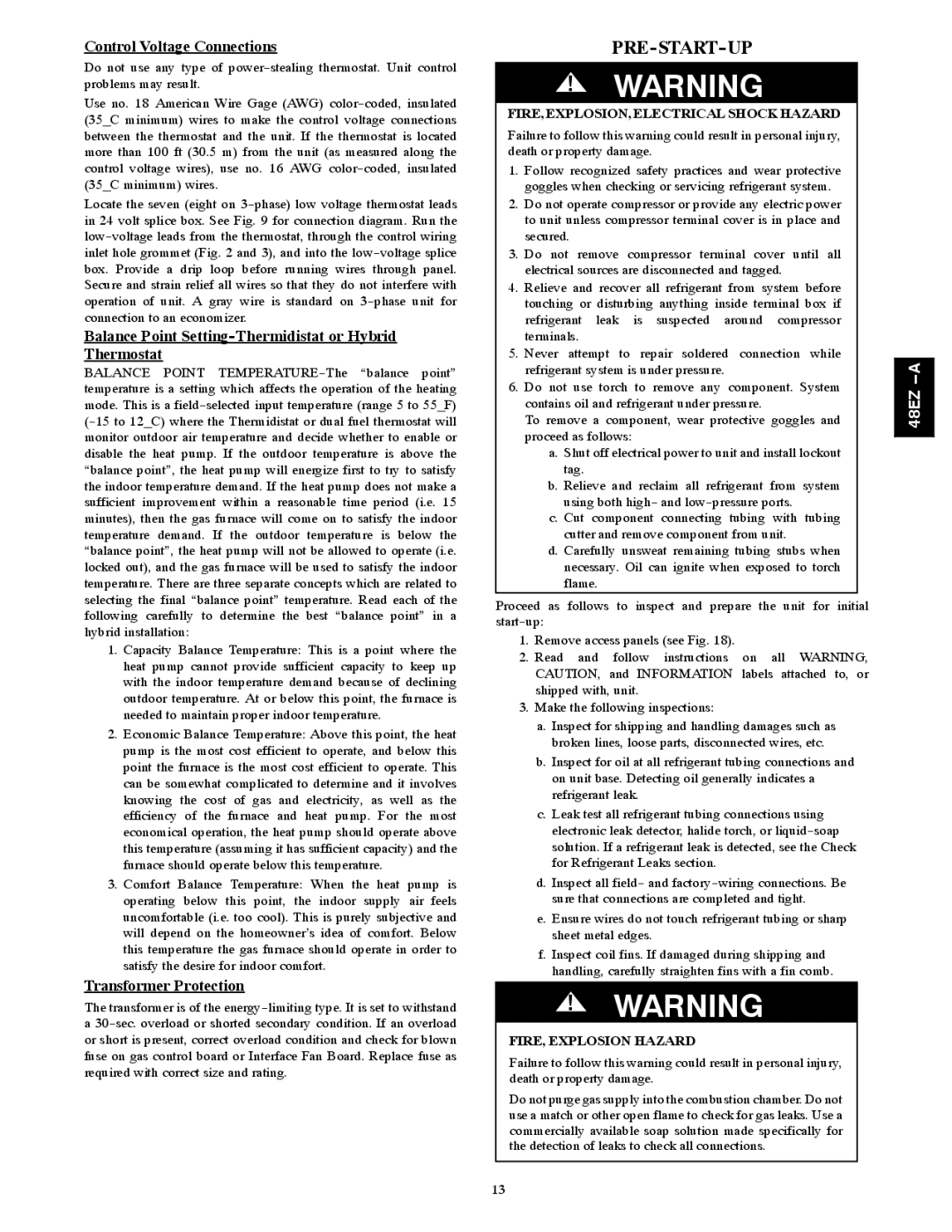
Control Voltage Connections
Do not use any type of
Use no. 18 American Wire Gage (AWG)
Locate the seven (eight on
Balance Point Setting-Thermidistat or Hybrid
Thermostat
BALANCE POINT
1.Capacity Balance Temperature: This is a point where the heat pump cannot provide sufficient capacity to keep up with the indoor temperature demand because of declining outdoor temperature. At or below this point, the furnace is needed to maintain proper indoor temperature.
2.Economic Balance Temperature: Above this point, the heat pump is the most cost efficient to operate, and below this point the furnace is the most cost efficient to operate. This can be somewhat complicated to determine and it involves knowing the cost of gas and electricity, as well as the efficiency of the furnace and heat pump. For the most economical operation, the heat pump should operate above this temperature (assuming it has sufficient capacity) and the furnace should operate below this temperature.
3.Comfort Balance Temperature: When the heat pump is operating below this point, the indoor supply air feels uncomfortable (i.e. too cool). This is purely subjective and will depend on the homeowner’s idea of comfort. Below this temperature the gas furnace should operate in order to satisfy the desire for indoor comfort.
Transformer Protection
The transformer is of the
PRE-START-UP
!WARNING
FIRE, EXPLOSION, ELECTRICAL SHOCK HAZARD
Failure to follow this warning could result in personal injury, death or property damage.
1.Follow recognized safety practices and wear protective goggles when checking or servicing refrigerant system.
2.Do not operate compressor or provide any electric power to unit unless compressor terminal cover is in place and secured.
3.Do not remove compressor terminal cover until all electrical sources are disconnected and tagged.
4.Relieve and recover all refrigerant from system before touching or disturbing anything inside terminal box if refrigerant leak is suspected around compressor terminals.
5.Never attempt to repair soldered connection while refrigerant system is under pressure.
6.Do not use torch to remove any component. System contains oil and refrigerant under pressure.
To remove a component, wear protective goggles and proceed as follows:
a.Shut off electrical power to unit and install lockout tag.
b.Relieve and reclaim all refrigerant from system using both high- and
c.Cut component connecting tubing with tubing cutter and remove component from unit.
d.Carefully unsweat remaining tubing stubs when necessary. Oil can ignite when exposed to torch flame.
Proceed as follows to inspect and prepare the unit for initial
1.Remove access panels (see Fig. 18).
2.Read and follow instructions on all WARNING, CAUTION, and INFORMATION labels attached to, or shipped with, unit.
3.Make the following inspections:
a.Inspect for shipping and handling damages such as broken lines, loose parts, disconnected wires, etc.
b.Inspect for oil at all refrigerant tubing connections and on unit base. Detecting oil generally indicates a refrigerant leak.
c.Leak test all refrigerant tubing connections using electronic leak detector, halide torch, or
d.Inspect all field- and
e.Ensure wires do not touch refrigerant tubing or sharp sheet metal edges.
f.Inspect coil fins. If damaged during shipping and handling, carefully straighten fins with a fin comb.
!WARNING
FIRE, EXPLOSION HAZARD
Failure to follow this warning could result in personal injury, death or property damage.
Do not purge gas supply into the combustion chamber. Do not use a match or other open flame to check for gas leaks. Use a commercially available soap solution made specifically for the detection of leaks to check all connections.
48EZ -- A
13
